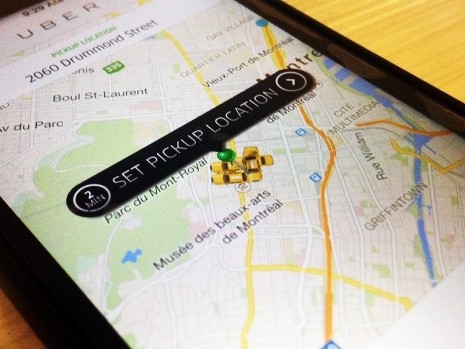
 Uber is having an effect in Montreal, just not the way many thought it would.
Uber is having an effect in Montreal, just not the way many thought it would.
Funny what a little competition can do. Montreal city council yesterday adopted a new dress and courtesy code that will require drivers to wear dark pants and white shirts and open the doors for their passengers.
The move, of course, is a response to the presence of Uber in the Canadian city and it’s part of a larger trend. It seems that wherever Uber goes, the transportation in that place gets a little better for consumers, whether they actually use the California-based ride sharing service or not.
Scott Wallsten, a writer with The Atlantic, looked at data from more than a billion cab rides in New York and Chicago and noted that customer complaints steadily declined after Uber arrived.
“That decrease in the relative level of complaints is consistent with improvements in taxi quality, but it might also be due to dissatisfied customers switching to Uber rather than bothering to file complaints,” says Wallsten. “But data from Chicago, where Uber also entered the market in 2011, suggest that at least some of the decrease in complaints is related to drivers making an effort to improve the quality of the ride.”
Worldwide, the taxi industry has not come off especially well in their fight against ride sharing service Uber. In Paris, they staged an “escargot protest” (they drove really slowly, snarling traffic). In Barcelona, they have threatened violence. And in Ottawa, things are getting really ugly.
The changes from Montreal’s city council go back to at least this past summer when mayor Denis Coderre, who believes Uber should be made illegal, unveiled a blueprint aimed at improving the taxi industry’s image in the city. For some incumbents, the issue is becoming critical. One cab company general manager estimates that his business is down 30-35% since Uber arrived.
“The whole taxi industry is now ready to turn the corner,” said Coderre. “”We want the metropolis to shine. “My objective is to make the taxi industry a model of performance and efficiency.”
While most companies argue that they can’t compete with Uber on price, many users of ride-sharing services say they also value other things about Uber, such as the convenience of not carrying cash, the fact that they don’t have to call for a cab or guess how long it will take, and the safety they feel because they have picture of a driver they can rate and an electronic record of the route.
Some consumers say the lack of attention to customer service when there was little competition means the cab industry has made their own bed, and now must lay in it.
“I’m one of those people that never carries cash, and cab drivers were always jerks about taking cards even though there is a credit card machine in the vehicle,” Lyft rider Whitney Bradford told USA Today recently. “If cab drivers were nicer, maybe I would go back to using cabs. Until then, I’m a loyal Lyft user.”
But some, like Toronto’s Beck Taxi are trying the “if you can beat ’em join ’em approach”. The company has been testing an app that will show passengers where their cab is on a map.
“It’s kinda like (Uber), but more legal,” said fleet operator Sam Moini, who operates the licenses for 30 cabs.
But many believe the damage has already been done to the traditional taxi business, and that it will never really recover.
“Once you go Uber, you never go Beck“, wrote Nazaneen Baqizada for the Toronto Observer recently. Baqizada quoted loyal Toronto UberX-user Tasha Noronha, who said she is done with cabs.
“Compared to all the other things that Uber has to offer in terms of safety, navigational ability, accessibility, and convenience, regular taxis need to do a lot to catch up to them,” she said.
Regulated or unregulated, legal or illegal, the bottom line with Uber is that people love it. In B.C., where the service isn’t even offered, Uber says their app was opened 25,000 times last month. More than 46,000 people have signed a petition imploring the government to approve the car-sharing service.
“This wouldn’t work if consumers didn’t love it,” says Uber spokesperson Lane Kasselman of the company’s app. “People were tired of the status quo. They wanted a new option.”
Leave a Reply
You must be logged in to post a comment.




 Share
Share Tweet
Tweet Share
Share




Comment